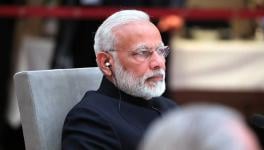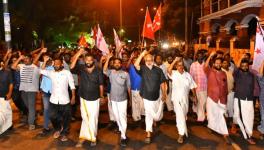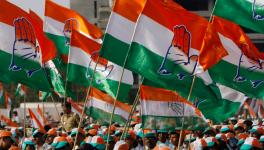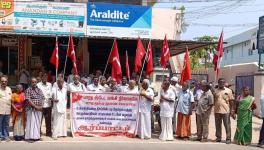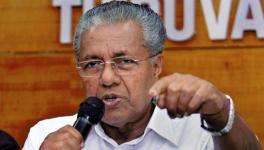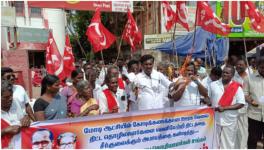One Region in India Is Holding Out Strong Against the Right-Wing Forces Led by Modi
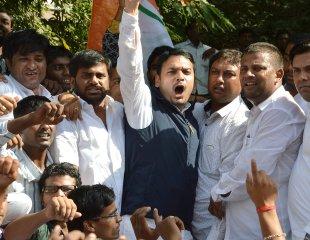
Photo Credit: Dipak Shelare / Shutterstock.com
The Left Development Front (LDF), the governing coalition in the Indian State of Kerala, will complete its first year on May 25. It came to power last year with a large majority, winning 91 seats in the 140 seat assembly of this Indian state, which is home to 34 million people (a million or so less than the total population of Canada).
Politics of anger rages across the rest of India, stoked from the very top by India’s governing party, the BJP, and its network of fascistic organizations. Politics seems more focused on cow protection rather than on the fact that half of India’s 1.3 billion people live in acute poverty. It seems far easier to stoke the fires of narrow nationalism than to tackle the pressing problems of hunger and hopelessness. "Security," as in other parts of the world, has come to mean an emboldened military and police rather than the security to live life at its fullest.
The State Against the World
Kerala, against the tide of the present, remains an exception. Powerful currents of social reform and a strong communist movement helped create the basis for the social developments over the past 60 years. In 1957, Kerala was the second state in the non-communist world—after the Republic of San Marino—to elect a communist government. Led by EMS Namboodiripad, one of the intellectual architects of contemporary Indian communism, the Communist Party of India pushed hard for administrative reforms as well as for an improvement of the well-being of ordinary people. The government was illegally overthrown in 1959. But that did not stop the left. It returned to power in 1965, 1967, 1980, 1987, 1996, 2006 and then 2016. It should be noted that since 1982, the Left Democratic Front and the United Democratic Front (led by the Congress) have alternated victories. It is as if the population of Kerala seeks to balance its governance between the two major fronts of the left and the right.
The deep roots of the left in the state have of course tilted the political culture toward the left. Even when the Congress comes to power, it is unable to shift the general dynamic of left governance rightwards. For this reason, there has been a general unanimity of reform in the state that has produced some startling social indicators. Kerala has India’s highest literacy rate (93.9%), its highest life expectancy rate (77 years), its highest sex ration (1,084 women per 1,000 men) and therefore its best Human Development Index score (0.712 in 2015).
Although the Congress-led front is not able to completely undermine the policies of the left it certainly tries to weaken the various schemes set up by the left governments. Whenever the left returns to power one of its first tasks is to revive the social welfare and social security schemes in their entirety.
In 2010, for example, the left government put in place a policy to provide migrant workers with legal rights, educational benefits and medical care. When the right came to power, it undermined many of these rights. The return of the left has meant not only a revival of these rights, but an extension of them. Close to 7 percent of Kerala’s population has migrated into the state from other parts of India (this happens as Kerala sends over two million workers, about 10 percent of its population to the Gulf). The government has provided health insurance for these workers as well as enhanced their educational benefits (including language study). This is an unusual policy, as most countries in the world have taken an anti-immigrant position. Kerala’s view is that its society would be weakened if it does not socially integrate its population of migrants.
Part of the agenda of creating an inclusive society must go through the schools. As faith in private education increases around the world, the left government in Kerala has decided to strengthen its public education system. Private education is certainly able to provide better opportunities for students, but only for the very few students who can afford the small classes with the best amenities. To shift the burden of education from public institutions to private institutions hurts the democratic commitment of the modern state for universal education. A lack of a market for private schools has led to the closure of many of them. The left government has put more resources into public schools and has decided to takeover private schools that have gone out of business. The government is taking education out of the market.
Without dignity, there is no education. If caste atrocities as well as disability and gender discrimination continue, then young people are simply not able to learn. The LDF has taken measures to ensure that discrimination is not only seen as intolerable but that policies be enacted to positively impact vulnerable populations. Every school in every district in Kerala will now have an "autism park" to ensure that every student is given the opportunity to learn. Dispensers for sanitary pads and tampons have to be in every girls’ bathroom in state schools. There is plan to ensure the creation of socio-cultural clubs in schools so that previously marginal students can be confident with their own cultures and backgrounds. Finally, there is a plan to build swimming pools at schools to give students of all social classes the opportunity for sport alongside education. Since education is hurt by a lack of electricity in the homes, Kerala’s left has pledged to declare the state fully electrified by May 29. Over this year, 150,000 homes have been connected to the power grid. No child should sit in the dark, unable to read.
Funds for the Future
Kerala’s Finance Minister T. M. Thomas Isaac, one of the architects of Kerala’s people’s planning initiative of the 1990s, plans to set up two missions to enhance the state’s health and education sectorsm Aardhram and Comprehensive Educational Rejuvenation Program. The plan is to ensure that 1,000 government schools will be at international educational standards.
Where will the money come from for all of this? The government is going to raise taxes and various fees on the rich and on commercial activity. In our times, the rich have been on a General Strike Against Taxation. They have simply refused to pay fair rates into the social fund. The government in Kerala will confront this General Strike with its own power base. It will also enhance commercial activity that lies in the public or state sector. Thirteen key public sector enterprises, which had been eviscerated by the Congress-led government, are now making profits once more. Increased wages for workers in various branches of the economy has also enhanced economic activity in the state, leading to the creation of a robust environment for broad-based economic growth, and therefore, for contributions to the exchequer.
There remain a great many problems in Kerala. This is not paradise. There is no "Kerala Model." To make a place into such a model creates a false expectation that it will always be on the right track and beyond criticism. This is not the case. Share of the state’s revenue fell from 2006 to 2016, which is why there is commitment to making the public or state sector profitable. Commercial tax revenue, the heart of the treasury’s resources, has been dropping over the past few years. This has not stopped the government from thinking big: forming a new Kerala Cooperative Bank and creating a massive fund to redo the state’s infrastructure. No sense in thinking small. Big problems require a bold imagination.
But also gestures that point to large commitments. In the Kochi train system, the left government will break a barrier. It will hire transgender ticket collectors and female ticket collectors and train drivers. This is part of the left government’s policy to end all discrimination against the transgender community. These are not small gestures for the transgender community, which has made social gains in India but not fast enough. These policies have been driven by the Kudumbashree Mission, set up by the Kerala government in 1998. The local organization of Neighborhood Groups (NHGs) by women across the state was intended as the basic structure for poverty eradication. These women, in their localities, lead the way for development. They have now put on the agenda immediate social inclusion of women and the transgender community. But their work is not done. They still have to ensure that every child across the state eats at least one meal a day and that everyone is housed. The Kudumbashree Mission, and others like it, are the backbone of the left government.
In the midst of the global age of anger, a small pocket in Kerala experiments with a future that is grounded in peace, justice and well-being. Far better than resentment, bigotry and inequality.
Disclaimer: The views expressed here are the author's personal views, and do not necessarily represent the views of Newsclick.
Get the latest reports & analysis with people's perspective on Protests, movements & deep analytical videos, discussions of the current affairs in your Telegram app. Subscribe to NewsClick's Telegram channel & get Real-Time updates on stories, as they get published on our website.










